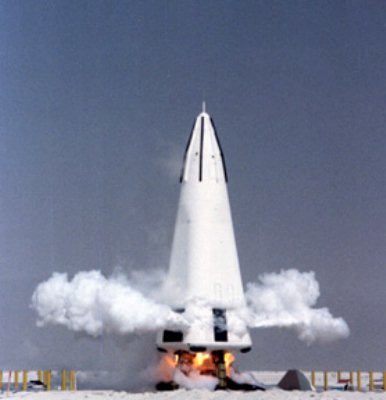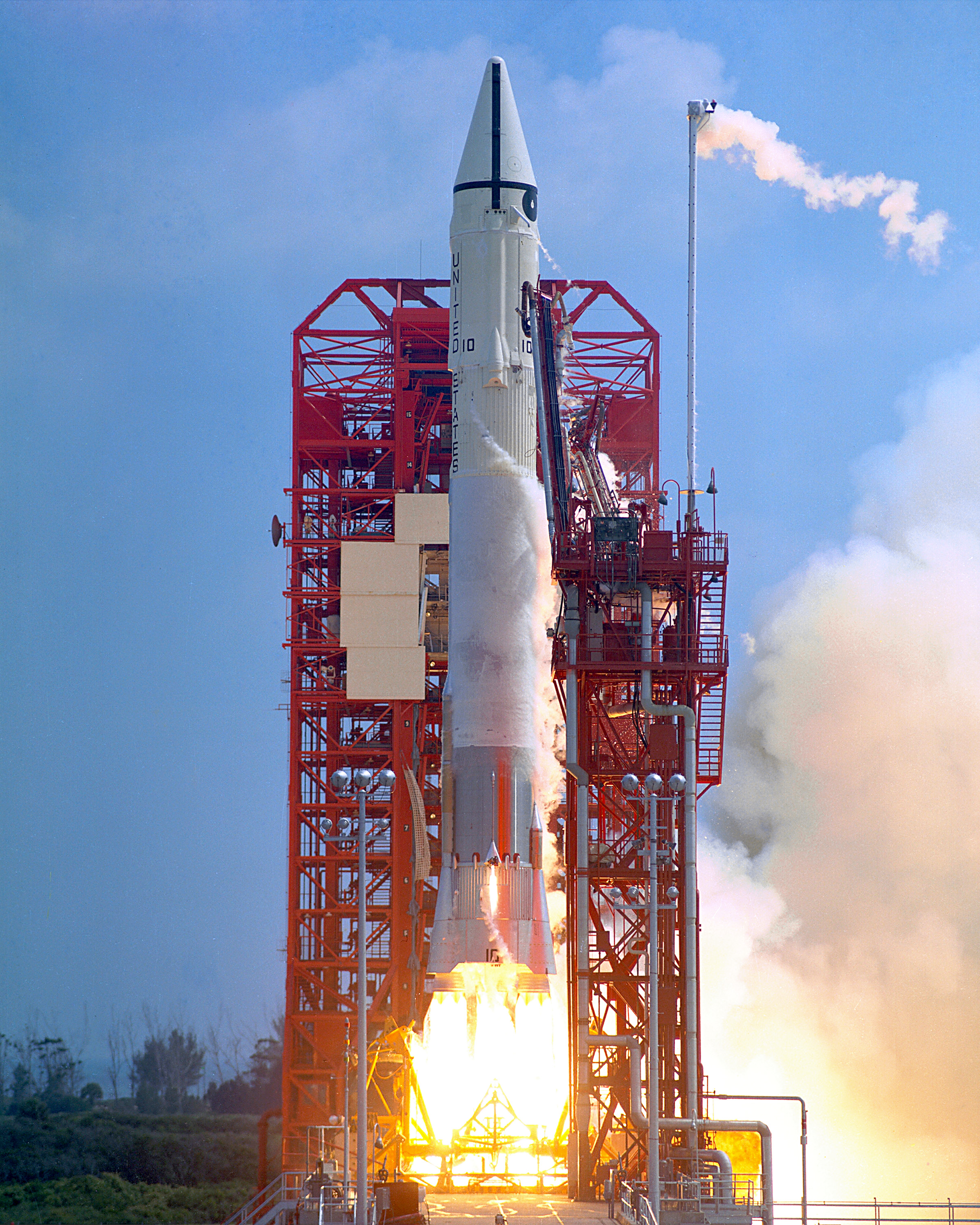|
Eclipse (rocket)
Eclipse, previously known as Firefly Beta and the Medium Launch Vehicle (MLV), is a two-stage, partially reusable medium-lift launch vehicle being jointly developed by Firefly Aerospace and Northrop Grumman. Formally announced in 2022, the rocket is designed to be a successor to Northrop Grumman's Antares launch vehicle, able to be partially reused and can launch 16,300 kg (35,900 lb) into low Earth orbit. Currently, the maiden launch of Eclipse is slated for the second half of 2026. History Firefly Beta Eclipse can be traced back to the late 2010s, following Firefly Space Systems' 2017 liquidation and reestablishment as Firefly Aerospace. It was originally conceptualized as Firefly Beta, following a naming scheme previously established by the Firefly Alpha small-lift launcher. Beta's initial design consisted of three Alpha cores strapped together in a fashion similar to Delta IV Heavy or Falcon Heavy. This triple core configuration would not last, as by 2020 Fi ... [...More Info...] [...Related Items...] OR: [Wikipedia] [Google] [Baidu] |
Reusable Launch System
A reusable launch vehicle has parts that can be recovered and reflown, while carrying payloads from the surface to outer space. Rocket stages are the most common launch vehicle parts aimed for reuse. Smaller parts such as fairings, boosters or rocket engines can also be reused, though reusable spacecraft may be launched on top of an expendable launch vehicle. Reusable launch vehicles do not need to make these parts for each launch, therefore reducing its launch cost significantly. However, these benefits are diminished by the cost of recovery and refurbishment. Reusable launch vehicles may contain additional avionics and propellant, making them heavier than their expendable counterparts. Reused parts may need to enter the atmosphere and navigate through it, so they are often equipped with heat shields, grid fins, and other flight control surfaces. By modifying their shape, spaceplanes can leverage aviation mechanics to aid in its recovery, such as gliding or lift. In the a ... [...More Info...] [...Related Items...] OR: [Wikipedia] [Google] [Baidu] |
Medium-lift Launch Vehicle
A medium-lift launch vehicle (MLV) is a rocket launch vehicle that is capable of lifting between by NASA classification or between by Russian classification of payload into low Earth orbit (LEO).50t payloads" An MLV is between a small-lift launch vehicle and a heavy-lift launch vehicle. Medium-lift vehicles comprise the majority of orbital launches , with both the Soyuz and Falcon 9 having launched several hundred times. History Soviet Union and Russia The Soviet R-7 family was based on the world's first intercontinental ballistic missile (ICBM). Sputnik was a small-lift derivative that carried the first satellite into orbit, and the R-7 design quickly grew in capacity, with Luna launching in 1958. The 1960s saw the R-7 series continue to develop, with Vostok 1 carrying the first human into space, Voskhod carrying multiple crew members, and the first Soyuz. , Soyuz variants are still operational and have launched over 1,100 times. The R-7 family has launched more times ... [...More Info...] [...Related Items...] OR: [Wikipedia] [Google] [Baidu] |
Ukraine
Ukraine is a country in Eastern Europe. It is the List of European countries by area, second-largest country in Europe after Russia, which Russia–Ukraine border, borders it to the east and northeast. Ukraine also borders Belarus to the north; Poland and Slovakia to the west; Hungary, Romania and Moldova to the southwest; and the Black Sea and the Sea of Azov to the south and southeast. Kyiv is the nation's capital and List of cities in Ukraine, largest city, followed by Kharkiv, Odesa, and Dnipro. Ukraine's official language is Ukrainian language, Ukrainian. Humans have inhabited Ukraine since 32,000 BC. During the Middle Ages, it was the site of early Slavs, early Slavic expansion and later became a key centre of East Slavs, East Slavic culture under the state of Kievan Rus', which emerged in the 9th century. Kievan Rus' became the largest and most powerful realm in Europe in the 10th and 11th centuries, but gradually disintegrated into rival regional powers before being d ... [...More Info...] [...Related Items...] OR: [Wikipedia] [Google] [Baidu] |
Orbital ATK
Orbital ATK Inc. was an American aerospace manufacturer and defense industry company. It was formed in February 9, 2015 from the merger of Orbital Sciences Corporation and parts of Alliant Techsystems (ATK). Orbital ATK designed, built, and delivered rocket engines, military vehicles, firearms, autocannons, missiles, ammunition, precision-guided munitions, satellites, missile approach warning systems, launch vehicles and spacecraft. The company was acquired by Northrop Grumman on June 6, 2018. The former Orbital ATK operations were renamed Northrop Grumman Innovation Systems and operated as a division until January 1, 2020 when a reorganization merged the operations into the company's other divisions. History A merger of Orbital Sciences Corporation and the defense and aerospace divisions of Alliant Techsystems (ATK) was announced on April 29, 2014. The two companies had collaborated on several previous projects, including the use of 400 ATK rocket motors in Orbital's laun ... [...More Info...] [...Related Items...] OR: [Wikipedia] [Google] [Baidu] |
Orbital Sciences Corporation
Orbital Sciences Corporation (commonly referred to as Orbital) was an American company specializing in the design, manufacture, and launch of small- and medium- class space and launch vehicle systems for commercial, military and other government customers. In 2014, Orbital merged with Alliant Techsystems (ATK) to create a new company called Orbital ATK, which in turn was purchased by Northrop Grumman in 2018. Orbital was headquartered in Dulles, Virginia and publicly traded on the New York Stock Exchange with the ticker symbol ORB. Orbital's primary products were satellites and launch vehicles, including low Earth orbit (LEO), geosynchronous Earth orbit and planetary spacecraft for communications, remote sensing, scientific and defense missions; ground- and air-launched launch vehicles that delivered satellites into orbit; missile defense systems that were used as interceptor and target vehicles; and human-rated space systems for Earth orbit, lunar and other missions. Orbital ... [...More Info...] [...Related Items...] OR: [Wikipedia] [Google] [Baidu] |
Aerojet Rocketdyne AR1
The Aerojet Rocketdyne AR1 is a thrust RP-1/ LOX oxidizer-rich staged combustion cycle rocket engine project. The engine was conceived in 2014, and received US government funding to build a prototype engine in 2016. By 2018, the USAF had committed of government funding to develop the engine and build an initial engine prototype, while Aerojet will put of private capital into the project through the prototype build. , there have been no plans to take the AR1 to full production. History Aerojet Rocketdyne proposed in 2014 to "lobby the government to fund an all-new, U.S.-sourced rocket propulsion system." In June 2014, Aerojet initially projected it would cost under per pair of engines, not including the up to estimated development cost to be funded by the government. Later in 2014, the US Congress passed a law requiring the US Air Force to "develop a new propulsion system by 2019 to replace the RD-180 engine" that powers Atlas V used by United Launch Alliance (ULA), becaus ... [...More Info...] [...Related Items...] OR: [Wikipedia] [Google] [Baidu] |
Aerojet Rocketdyne
Aerojet Rocketdyne is a subsidiary of American Arms industry, defense company L3Harris that manufactures rocket, Hypersonic flight, hypersonic, and electric propulsive systems for space, defense, civil and commercial applications. Aerojet traces its origins to the General Tire and Rubber Company (later renamed GenCorp, Inc. as it diversified) established in 1915, while Rocketdyne was created as a division of North American Aviation in 1955. Aerojet Rocketdyne was formed in 2013 when Aerojet and Pratt & Whitney Rocketdyne were merged, following the latter's acquisition by GenCorp, Inc. from Pratt & Whitney. Aerojet Rocketdyne was acquired by L3Harris in July 2023 for $4.7 billion. History Background: Aerojet Several decades after it began manufacturing rubber products, General Tire & Rubber diversified into broadcasting and aeronautics. In the 1940s, the Aerojet company began experimenting with various rocket designs. For a solid-fuel rocket, they needed binders, and tur ... [...More Info...] [...Related Items...] OR: [Wikipedia] [Google] [Baidu] |
Sun-synchronous Orbit
A Sun-synchronous orbit (SSO), also called a heliosynchronous orbit, is a nearly polar orbit around a planet, in which the satellite passes over any given point of the planet's surface at the same local mean solar time. More technically, it is an orbit arranged so that it Precession, precesses through one complete revolution each year, so it always maintains the same relationship with the Sun. Applications A Sun-synchronous orbit is useful for imaging satellite, imaging, reconnaissance satellite, reconnaissance, and weather satellites, because every time that the satellite is overhead, the surface illumination angle on the planet underneath it is nearly the same. This consistent lighting is a useful characteristic for satellites that image the Earth's surface in visible or infrared wavelengths, such as weather and spy satellites, and for other remote-sensing satellites, such as those carrying ocean and atmospheric remote-sensing instruments that require sunlight. For example, ... [...More Info...] [...Related Items...] OR: [Wikipedia] [Google] [Baidu] |
Falcon Heavy
Falcon Heavy is a super heavy-lift launch vehicle with partial reusability that can carry cargo into Earth orbit and beyond. It is designed, manufactured and launched by American aerospace company SpaceX. The rocket consists of a center core on which two Falcon 9 boosters are attached, and a second stage on top of the center core. Falcon Heavy has the second highest payload capacity of any currently operational launch vehicle behind NASA's Space Launch System (SLS), and the fourth-highest capacity of any rocket to reach orbit, trailing behind the Space Launch System, SLS, Energia (rocket), Energia and the Saturn V. SpaceX conducted Falcon Heavy test flight, Falcon Heavy's maiden launch on 6 February 2018, at 20:45 Coordinated Universal Time, UTC. As a Boilerplate (spaceflight), dummy payload, the rocket carried Elon Musk's Tesla Roadster, a Tesla Roadster belonging to SpaceX founder Elon Musk, with a mannequin dubbed "Starman" in the driver's seat. The second Falcon Heavy laun ... [...More Info...] [...Related Items...] OR: [Wikipedia] [Google] [Baidu] |
Delta IV Heavy
The Delta IV Heavy (Delta 9250H) was an expendable heavy-lift launch vehicle, the largest type of the Delta IV family. It had the highest capacity of any operational launch vehicle in the world after the retirement of the Space Shuttle in 2011 until the Falcon Heavy debuted in 2018, and it was the world's third highest-capacity launch vehicle in operation at the time of its retirement in 2024. It was manufactured by United Launch Alliance (ULA) and was first launched in 2004. Delta IV Heavy was the last operating member of the Delta IV family, and its final flight was on 9 April 2024. It is succeeded by the Vulcan Centaur rocket. The Delta IV Heavy first stage consisted of a central Common Booster Core (CBC), with two additional CBCs as liquid rocket boosters instead of the GEM-60 solid rocket motors used by the Delta IV Medium+ versions. At lift-off, all three rocket engines would operate at full thrust, and 44 seconds later the central engine would throttle down to 5 ... [...More Info...] [...Related Items...] OR: [Wikipedia] [Google] [Baidu] |
Small-lift Launch Vehicle
A small-lift launch vehicle is a rocket orbital launch vehicle that is capable of lifting or less (by NASA classification) or under (by Roscosmos classification) of payload into low Earth orbit (LEO). The next larger category is medium-lift launch vehicles. The first small-lift launch vehicle was the Sputnik rocket, launched by the Soviet Union, which was derived from the R-7 Semyorka ICBM. On 4 October 1957, the Sputnik rocket was used to perform the world's first satellite launch, placing the Sputnik 1 satellite into a low Earth orbit. The US responded by attempting to launch the Vanguard rocket. However, the Vanguard TV3 launch attempt failed, with the 31 January 1958 launch of the Explorer 1 satellite using the Juno I rocket being the first successful US orbital launch. The Vanguard I mission was the second successful US orbital launch. This was the start of the space race. Since the late 1950s, small-lift launch vehicles have continued launching payloads into orbits ... [...More Info...] [...Related Items...] OR: [Wikipedia] [Google] [Baidu] |





